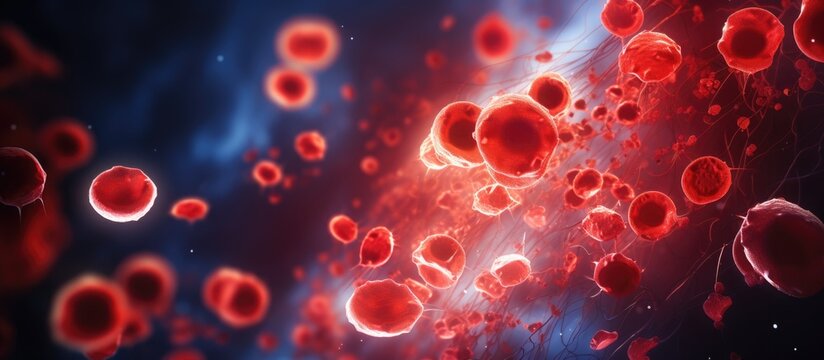Acute Myeloid Leukaemia (AML) in Children
Acute Myeloid Leukaemia (AML) is a rare but significant type of blood cancer in children. Though a third of all childhood cancers are leukaemia, fewer than a quarter of these cases are AML. AML affects both boys and girls equally and can occur at any age.
A Note on Childhood Cancer
Thanks to advancements in medical treatments and innovative therapies, more children are surviving cancer today than ever before. These new treatments have also helped minimize the long-term effects of past cancer therapies. A diagnosis of cancer in your child can be an overwhelming and deeply distressing experience. However, you don’t have to face it alone—there are healthcare professionals, support groups, and resources available to guide you through every step.
Understanding Leukaemia
Leukaemia is a cancer affecting white blood cells. All blood cells are produced in bone marrow—a soft, spongy tissue found inside bones. Blood cells include:
- Red Blood Cells (RBCs): Responsible for carrying oxygen throughout the body.
- Platelets: Help control bleeding and clot blood.
- White Blood Cells (WBCs): Play a crucial role in fighting infections.
Leukaemia disrupts the normal production of blood cells by causing an overproduction of immature white blood cells that cannot properly perform their immune functions. This accumulation can severely impact the production of healthy cells, leading to increased infection risks, anaemia, and other symptoms.
Types of Leukaemia in Children:
- Acute Lymphoblastic Leukaemia (ALL)
- Acute Myeloid Leukaemia (AML)
- Chronic Lymphocytic Leukaemia (CLL)
- Chronic Myeloid Leukaemia (CML)
What is Acute Myeloid Leukaemia (AML)?
AML is characterized by the overproduction of immature myeloid white blood cells, known as blast cells. These cells often lack differentiation, preventing them from developing into mature, functional white blood cells. AML is divided into subtypes based on the specific cell affected and its stage of development, which helps guide treatment.
Common Classification Systems:
- French-American-British (FAB) System: Categorizes AML into subtypes M0 through M7 based on cell differentiation and maturation.
- WHO Classification System: Another method used for classification.
Causes of AML in Children
The exact cause of AML remains unknown. However, certain factors may increase risk:
- Genetic Disorders: Conditions like Down’s syndrome or Li-Fraumeni syndrome are associated with a higher risk of developing AML.
- Family History: While having a sibling with AML slightly raises risk, it remains relatively uncommon.
- Other Conditions: Non-cancerous blood disorders, such as myelodysplastic syndromes (MDS) or aplastic anaemia, can raise AML risk.
AML is not contagious and cannot be spread from person to person.
Signs and Symptoms
As leukaemia cells multiply, normal blood cell production is disrupted. Symptoms can resemble common viral infections, but if they persist for more than a week or two, they should be investigated further. Common symptoms include:
- Fatigue and Lethargy (due to anaemia)
- Bruising and Bleeding: Caused by a low platelet count.
- Frequent Infections: Due to reduced normal white blood cells.
- Bone and Joint Pain
- Swollen Lymph Glands
- General Unwellness
Diagnosis of AML
Initial Tests:
- Blood Test: Identifies abnormal white blood cells.
- Bone Marrow Sample: Confirms diagnosis and examines genetic markers.
- Lumbar Puncture: Checks for leukaemia cells in spinal fluid.
- Chest X-ray: Identifies enlarged glands in the chest.
Treatment for AML
The primary treatment for AML is chemotherapy. This is administered in stages:
1. Induction Therapy
- Intensive chemotherapy aimed at killing as many leukaemia cells as possible.
- Involves two cycles of treatment.
- Bone marrow tests confirm if remission is achieved (absence of detectable leukaemia).
2. Post-Remission Therapy
- Additional chemotherapy to eliminate any remaining cancer cells and prevent relapse.
3. Bone Marrow Transplant
- Recommended for cases where standard chemotherapy is less effective.
4. Central Nervous System (CNS) Treatment
- AML can spread to the CNS. Intrathecal chemotherapy (directly into spinal fluid) or radiotherapy may be used to prevent or treat this.
Side Effects of Treatment
AML treatments can have side effects due to their impact on normal cells:
- Hair Loss
- Low Blood Cell Counts: Increases risk of bruising, bleeding, and infections.
- Nausea and Vomiting
- Loss of Appetite and Weight Loss
Late Side Effects
- Rarely, treatment can lead to long-term issues, such as:
- Fertility Problems
- Heart Function Changes
- Increased Risk of a Second Cancer
Clinical Trials and Research
Participation in clinical trials is an option to access new or modified treatments under expert care. Discuss with your child’s medical team if this might be suitable for your child.
Follow-Up Care
Many children achieve remission and are cured. Recurrence typically occurs within the first three years if it happens, and additional treatment is available.
Support and Emotions
Facing a cancer diagnosis can be incredibly challenging for both children and parents. It is normal to experience fear, guilt, sadness, anger, and uncertainty. Open communication with healthcare providers, support groups, and counselling services can make a significant difference in coping during this difficult time.







